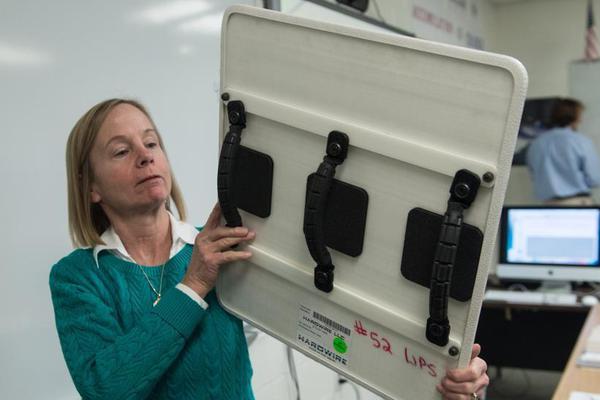
1. Enter "dxdiag" in the run. If a pop-upThe DirectX diagnostic tool dialog box prompts us whether we want to check. Click OK.
2. Check memory: 64-bit operating systems usually require a higher memory capacity to run, and it is recommended that you have at least 4GB of memory.
3. First, select "Computer" and right-click "Properties". You can see the digits of the computer operating system. You can also click "Start", enter "cmd" in the input box, and click "cmd application". Enter "systeminfo" in the cmd interface and press Enter. The digits of the operating system can be seen here.
4. Find the "Installed Memory (RAM)" column in the system information. If the memory capacity exceeds 4GB, the 64-bit operating system can be installed. Check hardware compatibility: Some older models of devices may not support 64-bit operating systems.
1. Right-click "Properties" on the desktop and a window titled "System Properties" pops up. Record whether your system is 32-bit or 64-bit information under the "General" tab. If your system is 64-bit, it will be clearly marked as "x64 Edition", otherwise your system will be 32-bit.
2. Step 1: Right-click "Properties" in "My Computer" on the desktop. Step 2: A window titled "System Properties" pops up, and record the information of whether your system is 32-bit or 64-bit under the "General" tab.
3. If you want to know whether your computer is a 32-bit system or a 64-bit system, you only need to check the system information. The steps are as follows: find "My Computer" on the desktop and click to select it. Right-click, select and click "Properties" in the pop-up menu.
4. Right-click "Properties" in "My Computer" on the desktop; a window with the title "System Properties" pops up, and record the information of whether your system is 32-bit or 64-bit under the "General" tab.
1, First, right-click "My Computer" and select "Properties". Open the system properties box, and then select "General". If it is not clearly marked with x64, it means that the computer is 32-bit. Method 2: Click "Start" and then select "Run". Enter "winmsd.exe" in the window and click OK.
2. Method 1: Start-Run Command Enter the sysdm.cpl or winmsd.exe command in the command box to view the system information. If possible, it will pop up in the system properties box.
3. Right-click "My Computer", "Properties" and "Device Manager" to see how many are under the "Processor" tab. If there are two, it is dual-core, and more than one is multi-core, such as 4-core, 8-core, so as long as it is dual-core and dual-core or above, it is a 64-bit operating system.
4. Check the computer configuration by entering the "dxdiag" command in the run; the specific steps are as follows: enter "dxdiag" in the run. If a DirectX diagnostic tool dialog box pops up, prompting us whether we want to check, click OK.
5. Check how many bit systems your computer is currently using. Take Windows 7 as an example. Right-click on the computer - Properties to view. In addition, a software is recommended, a green single file, which can clearly indicate the operating system digits of the current system.As shown in the figure, the software is divided into three parts, that is, the current system bits.
OKX Wallet app-APP, download it now, new users will receive a novice gift pack.
1. Enter "dxdiag" in the run. If a pop-upThe DirectX diagnostic tool dialog box prompts us whether we want to check. Click OK.
2. Check memory: 64-bit operating systems usually require a higher memory capacity to run, and it is recommended that you have at least 4GB of memory.
3. First, select "Computer" and right-click "Properties". You can see the digits of the computer operating system. You can also click "Start", enter "cmd" in the input box, and click "cmd application". Enter "systeminfo" in the cmd interface and press Enter. The digits of the operating system can be seen here.
4. Find the "Installed Memory (RAM)" column in the system information. If the memory capacity exceeds 4GB, the 64-bit operating system can be installed. Check hardware compatibility: Some older models of devices may not support 64-bit operating systems.
1. Right-click "Properties" on the desktop and a window titled "System Properties" pops up. Record whether your system is 32-bit or 64-bit information under the "General" tab. If your system is 64-bit, it will be clearly marked as "x64 Edition", otherwise your system will be 32-bit.
2. Step 1: Right-click "Properties" in "My Computer" on the desktop. Step 2: A window titled "System Properties" pops up, and record the information of whether your system is 32-bit or 64-bit under the "General" tab.
3. If you want to know whether your computer is a 32-bit system or a 64-bit system, you only need to check the system information. The steps are as follows: find "My Computer" on the desktop and click to select it. Right-click, select and click "Properties" in the pop-up menu.
4. Right-click "Properties" in "My Computer" on the desktop; a window with the title "System Properties" pops up, and record the information of whether your system is 32-bit or 64-bit under the "General" tab.
1, First, right-click "My Computer" and select "Properties". Open the system properties box, and then select "General". If it is not clearly marked with x64, it means that the computer is 32-bit. Method 2: Click "Start" and then select "Run". Enter "winmsd.exe" in the window and click OK.
2. Method 1: Start-Run Command Enter the sysdm.cpl or winmsd.exe command in the command box to view the system information. If possible, it will pop up in the system properties box.
3. Right-click "My Computer", "Properties" and "Device Manager" to see how many are under the "Processor" tab. If there are two, it is dual-core, and more than one is multi-core, such as 4-core, 8-core, so as long as it is dual-core and dual-core or above, it is a 64-bit operating system.
4. Check the computer configuration by entering the "dxdiag" command in the run; the specific steps are as follows: enter "dxdiag" in the run. If a DirectX diagnostic tool dialog box pops up, prompting us whether we want to check, click OK.
5. Check how many bit systems your computer is currently using. Take Windows 7 as an example. Right-click on the computer - Properties to view. In addition, a software is recommended, a green single file, which can clearly indicate the operating system digits of the current system.As shown in the figure, the software is divided into three parts, that is, the current system bits.
Binance Download for PC Windows 10
author: 2025-02-28 09:37OKX Wallet apk download latest version
author: 2025-02-28 07:17OKX Wallet apk download latest version
author: 2025-02-28 07:50 Binance download APK
Binance download APK
259.98MB
Check Binance login
Binance login
161.58MB
Check OKX Wallet Sign up
OKX Wallet Sign up
954.76MB
Check Binance app
Binance app
346.74MB
Check OKX Wallet
OKX Wallet
945.93MB
Check Binance login
Binance login
859.66MB
Check OKX Wallet extension
OKX Wallet extension
431.41MB
Check Binance wikipedia
Binance wikipedia
394.98MB
Check Binance app
Binance app
341.46MB
Check Binance download iOS
Binance download iOS
367.46MB
Check OKX review
OKX review
212.31MB
Check Binance US
Binance US
731.15MB
Check Binance login
Binance login
865.42MB
Check OKX Wallet Sign up
OKX Wallet Sign up
567.29MB
Check OKX download
OKX download
355.91MB
Check Binance download iOS
Binance download iOS
423.31MB
Check OKX Wallet apk download
OKX Wallet apk download
328.66MB
Check Binance app
Binance app
187.71MB
Check Binance download iOS
Binance download iOS
821.63MB
Check Binance US
Binance US
587.33MB
Check Binance APK
Binance APK
353.53MB
Check OKX Wallet apk download latest version
OKX Wallet apk download latest version
764.14MB
Check OKX Wallet download
OKX Wallet download
889.78MB
Check Binance app
Binance app
296.19MB
Check Binance download
Binance download
391.24MB
Check Binance app download Play Store
Binance app download Play Store
569.77MB
Check Binance Download for PC
Binance Download for PC
864.79MB
Check OKX download
OKX download
195.79MB
Check Binance wallet
Binance wallet
442.45MB
Check OKX Wallet APK
OKX Wallet APK
645.48MB
Check OKX review
OKX review
787.51MB
Check Binance login
Binance login
584.79MB
Check OKX Wallet login
OKX Wallet login
486.73MB
Check Binance US
Binance US
551.73MB
Check OKX review
OKX review
131.37MB
Check Binance market
Binance market
139.64MB
Check
Scan to install
OKX Wallet app to discover more
Netizen comments More
924 权时制宜网
2025-02-28 09:44 recommend
2662 厚貌深情网
2025-02-28 09:33 recommend
237 惊恐失色网
2025-02-28 08:45 recommend
2193 英雄豪杰网
2025-02-28 08:08 recommend
1902 不能自已网
2025-02-28 08:07 recommend